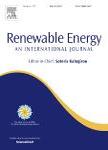版权所有:内蒙古大学图书馆 技术提供:维普资讯• 智图
内蒙古自治区呼和浩特市赛罕区大学西街235号 邮编: 010021

作者机构:Southeast Univ Natl Engn Res Ctr Power Generat Control & Safety Sch Energy & Environm Nanjing 210096 Peoples R China Univ Southern Denmark Dept Mech & Elect Engn SDU Mechatron DK-6400 Sonderborg Denmark Univ Southern Denmark Ctr Ind Mech Dept Mech & Elect Engn DK-6400 Sonderborg Denmark Tsinghua Univ Dept Energy & Power Engn State Key Lab Power Syst Beijing 100084 Peoples R China
出 版 物:《RENEWABLE ENERGY》 (Renew. Energy)
年 卷 期:2025年第241卷
核心收录:
学科分类:0820[工学-石油与天然气工程] 080703[工学-动力机械及工程] 08[工学] 0807[工学-动力工程及工程热物理]
基 金:China (NSFC) Science and Technology Department of Jiangsu Province [BK20240073, BE2022029, BE2022040, BK20222004, BA2023005] Nanjing Science and Technology Bureau Fundamental Research Funds for Central Universities [2242024k30046]
主 题:SOFC Cross-flow Artificial neural network Non-dominated sorting genetic algorithm-II Dynamic response
摘 要:The cross-flow configuration has obvious advantages for the fabrication of solid oxide fuel cell (SOFC) stacks, but results in a complex distribution of variables within the cell. This study introduces a cross-flow SOFC system designed to enhance unreacted hydrogen recovery and air recycling. The optimization framework formed by combining system simulation, Artificial Neural Network (ANN) surrogate model and Non-dominated Sorting Genetic Algorithm-II (NSGA-II) is applied to improve the system s comprehensive performance. Then, the steadystate performance and the dynamic responses of the system are analyzed. The results show that the ANN model has high prediction precision with coefficients of determination greater than 0.9999, and the optimization framework can implement a fast-global optimization of the system. The SOFC power and efficiency of the optimized system are 80.2024 kW and 61.97 % respectively, and the fuel utilization of the system is 99.92 %. The maximum temperature gradient of SOFC is less than 10 K/cm and the standard deviation of the temperature distribution is 18.8664 K. The SOFC temperature of the optimal system increases and then decreases along the hydrogen flow direction. The step change of current and air flow causes different dynamic responses of the system, especially significant differences in SOFC voltage, and system efficiency.